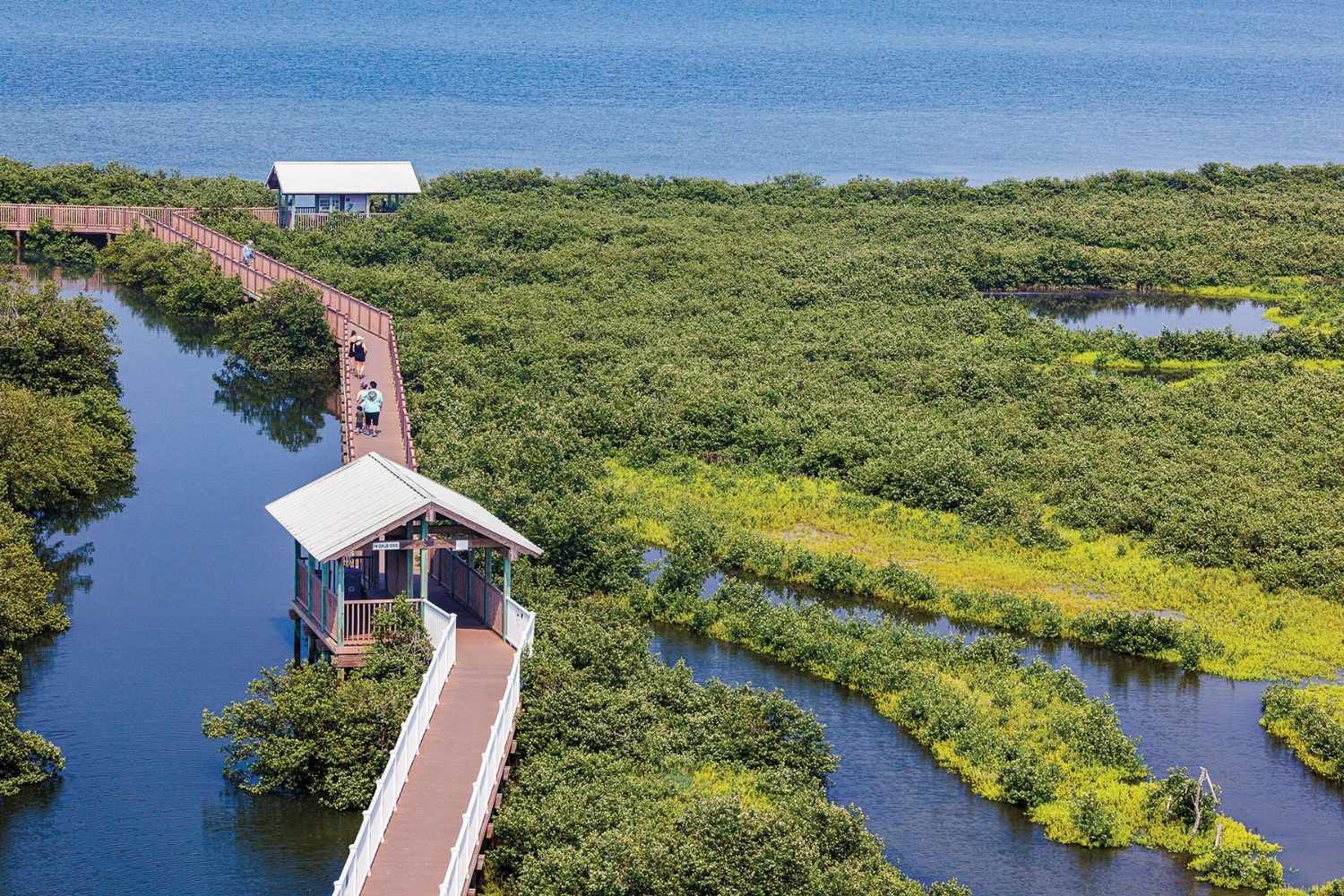Hidden Wonders Of Texas’s Lower Rio Grande Valley Wildlife Refuges

Have you ever wondered what makes Texas's Lower Rio Grande Valley so special for nature lovers? This region is home to some of the most diverse wildlife refuges in the United States. From rare birds to unique plant species, the Lower Rio Grande Valley wildlife refuges offer a sanctuary for both animals and visitors. Imagine walking through lush landscapes where you might spot a colorful Green Jay or a majestic Ocelot. These refuges are not just for scientists or bird watchers; they are perfect for anyone who loves the outdoors. Whether you're an avid hiker or just looking for a peaceful place to relax, these wildlife refuges have something for everyone.
Discover the Hidden Wonders of Texas's Lower Rio Grande Valley Wildlife Refuges
Texas's Lower Rio Grande Valley is a treasure chest of natural beauty and biodiversity. This region, where the United States meets Mexico, is home to a series of wildlife refuges that offer a glimpse into the rich tapestry of flora and fauna. Whether you're a birdwatcher, a nature enthusiast, or just someone looking to escape the hustle and bustle, these refuges promise an unforgettable experience.
Santa Ana National Wildlife Refuge
Santa Ana National Wildlife Refuge is often called the "jewel" of the National Wildlife Refuge System. This 2,088-acre sanctuary is a haven for birdwatchers and nature lovers alike.
- Birdwatching Paradise: With over 400 bird species recorded, including the rare Green Jay and Great Kiskadee, it's a birdwatcher's dream.
- Butterfly Haven: Home to more than 300 butterfly species, making it one of the best places in the U.S. to see these colorful insects.
- Scenic Trails: Explore 12 miles of trails that wind through lush forests, wetlands, and along the Rio Grande River.
Laguna Atascosa National Wildlife Refuge
Laguna Atascosa National Wildlife Refuge is the largest protected area of natural habitat in the Lower Rio Grande Valley. This 98,000-acre refuge is a critical habitat for many endangered species.
- Ocelot Habitat: One of the last refuges for the endangered ocelot in the U.S., providing a unique opportunity to learn about these elusive cats.
- Birding Hotspot: Over 400 bird species, including the striking Aplomado Falcon, can be spotted here.
- Laguna Madre: A hypersaline lagoon that supports a diverse array of marine life and offers stunning views.
Bentsen-Rio Grande Valley State Park
Bentsen-Rio Grande Valley State Park is a key site within the World Birding Center network. This park is a must-visit for anyone interested in the avian wonders of the region.
- World Birding Center: A premier birdwatching destination with facilities designed to enhance the birding experience.
- Hawk Tower: Climb the tower for a panoramic view and a chance to see migrating hawks and other raptors.
- Nature Trails: Miles of trails that take you through diverse habitats, from woodlands to wetlands.
Resaca de la Palma State Park
Resaca de la Palma State Park is another gem in the World Birding Center network. This park offers a serene escape into nature with its extensive trail system and rich biodiversity.
- Resaca Loop Trail: A 3-mile trail that loops around a resaca, a type of oxbow lake, providing excellent wildlife viewing opportunities.
- Butterfly Garden: A dedicated garden that attracts a variety of butterfly species, perfect for close-up photography.
- Tram Tours: Guided tram tours that offer an informative and relaxing way to explore the park's highlights.
Estero Llano Grande State Park
Estero Llano Grande State Park is known for its wetlands, which attract a wide variety of bird species. This park is a favorite among birdwatchers and photographers.
- Wetland Wonders: Home to a variety of waterfowl, wading birds, and shorebirds, making it a prime spot for birdwatching.
- Alligator Lake: A small lake where you can often spot American alligators basking in the sun.
- Boardwalk Trails: Elevated boardwalks that take you through wetlands, offering close-up views of the park's diverse wildlife.
Lower Rio Grande Valley National Wildlife Refuge
The Lower Rio Grande Valley National Wildlife Refuge is a sprawling network of protected lands that stretch along the Rio Grande River. This refuge is crucial for the conservation of the region's unique ecosystems.
- Wildlife Corridors: These corridors connect fragmented habitats, providing safe passage for wildlife and promoting biodiversity.
- Rare Species: Home to endangered species like the Texas tortoise and the indigo snake.
- Scenic Overlooks: Several overlooks offer breathtaking views of the Rio Grande River and the surrounding landscapes.
Embrace the Natural Beauty of Texas's Lower Rio Grande Valley
Texas's Lower Rio Grande Valley offers a unique blend of wildlife and natural beauty. From the vibrant bird species at Santa Ana National Wildlife Refuge to the diverse ecosystems at Laguna Atascosa, these refuges are a haven for nature lovers. Whether you're an avid birder, a wildlife photographer, or someone who simply enjoys the outdoors, this region has something special to offer.
Exploring these refuges provides a chance to connect with nature and witness the incredible biodiversity of the area. The trails, observation decks, and guided tours make it easy to experience the best of what these refuges have to offer. Don't miss the opportunity to visit and see for yourself the hidden wonders of Texas's Lower Rio Grande Valley. Plan your trip today and discover the natural treasures waiting for you.

